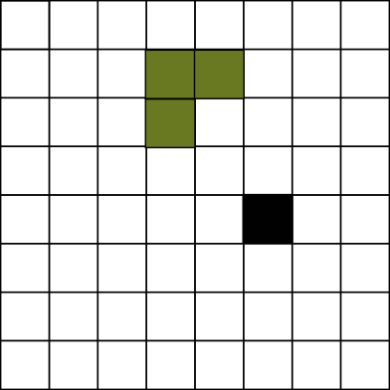Taxicab geometry is a wonderful world, where common truths of normal (Euclidean) geometry don’t hold. For example, The length of the diagonal of a square is twice the length of its side (not square root of 2). Another example: the figure whose every point is equidistant from its center is not a circle; it is a diamond shape.
Now it would be interesting to see how soap bubbles will behave in Taxicab geometry. It is easier to examine the continuous geometry version, where the size of zig-zags is infinitely small, because the tools of calculus can be used.
- What is the equilibrium shape of a single bubble? That is, which shape with a given area has the minimum parameter?
- What is the equilibrium shape of two equal-area bubbles? When the two bubbles share a common boundary, the total boundary length shrinks.
- What if the two bubbles have different areas?
The corresponding questions for discrete Taxicab geometry (all lines lie on a square lattice) are somewhat harder, but once some intuition has been developed for the continuous case, one can take the continuous solutions as a starting point and then look for variations.
Filed under: puzzle, wonderful | Tagged: surafce tension, taxicab geometry | Leave a comment »



